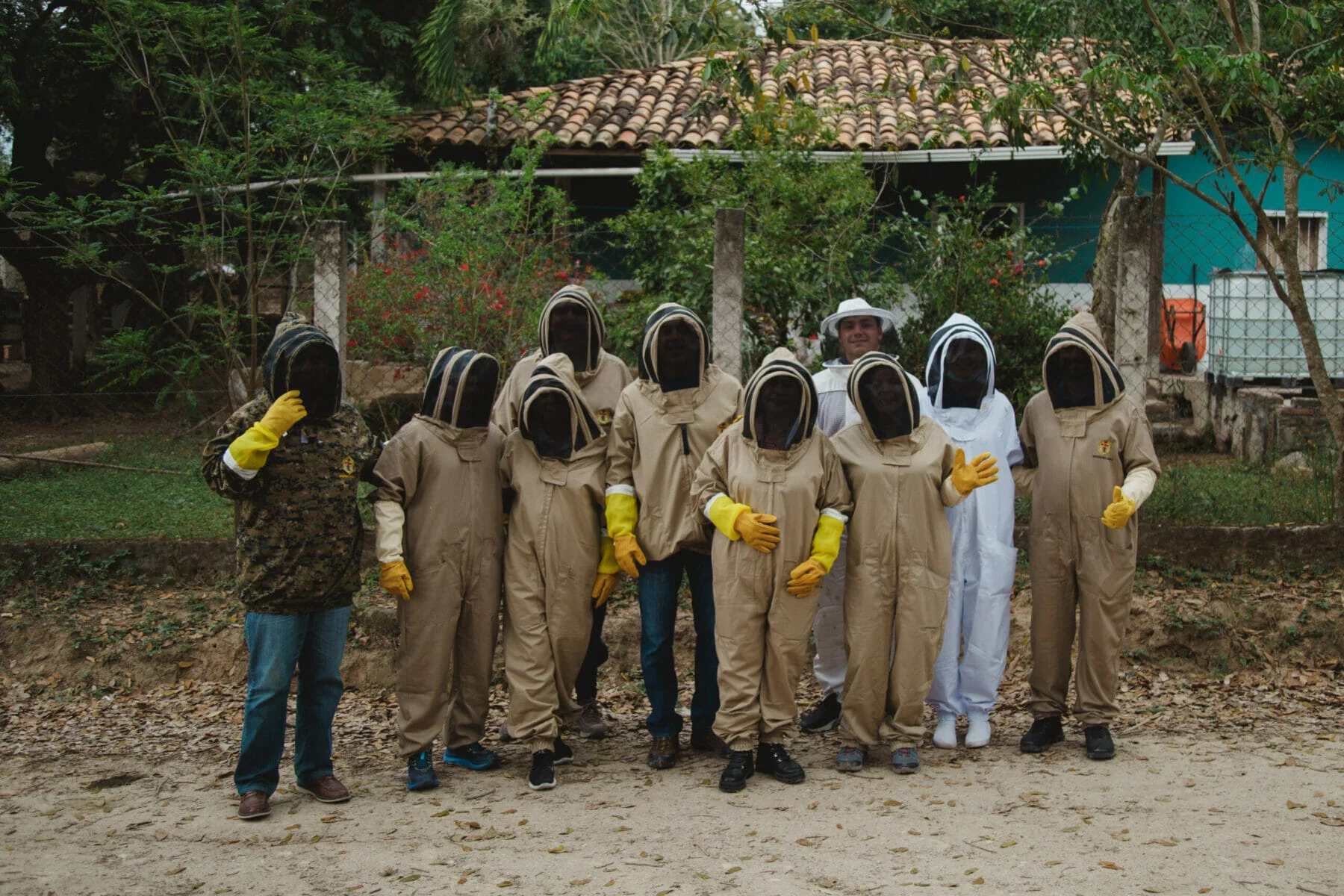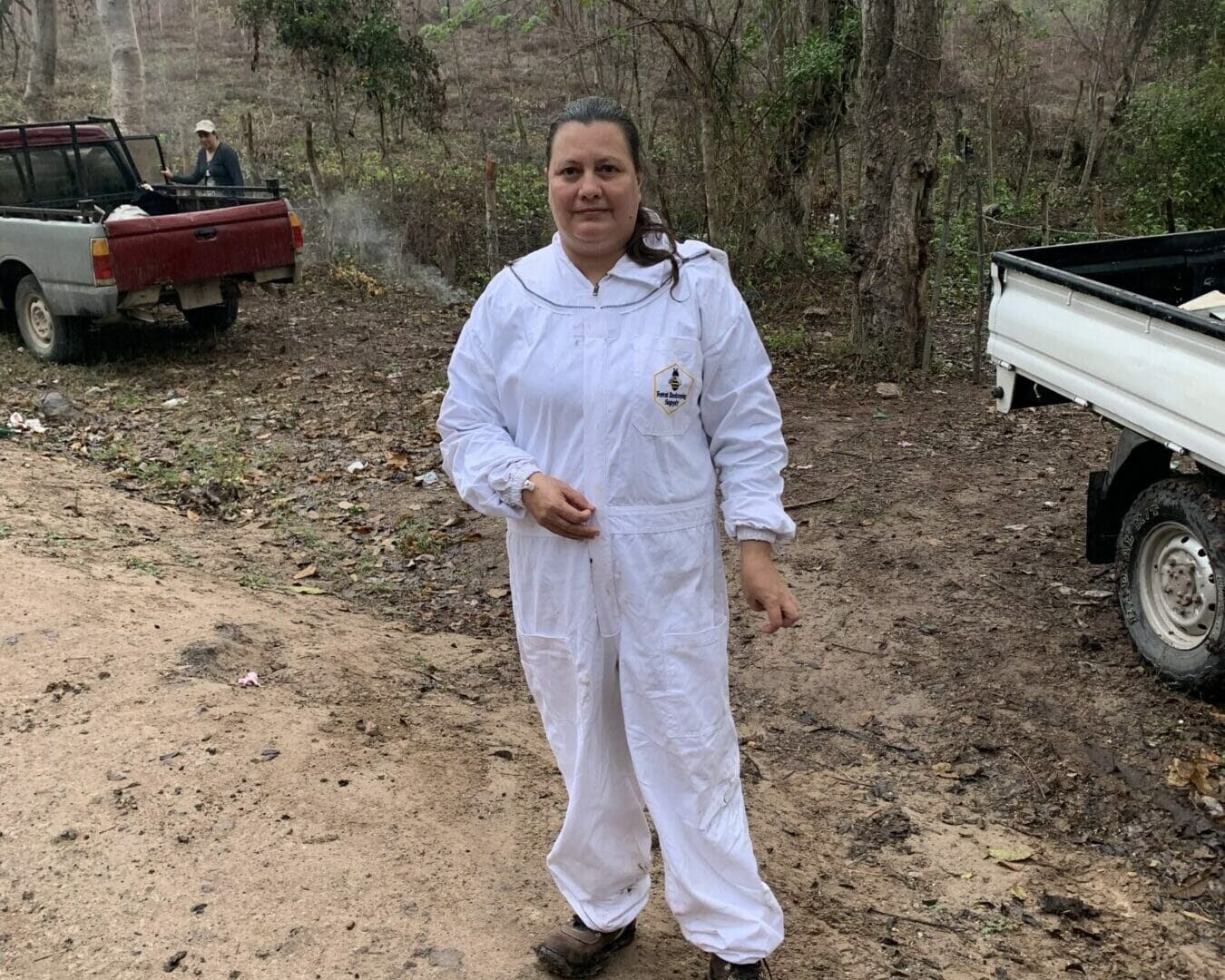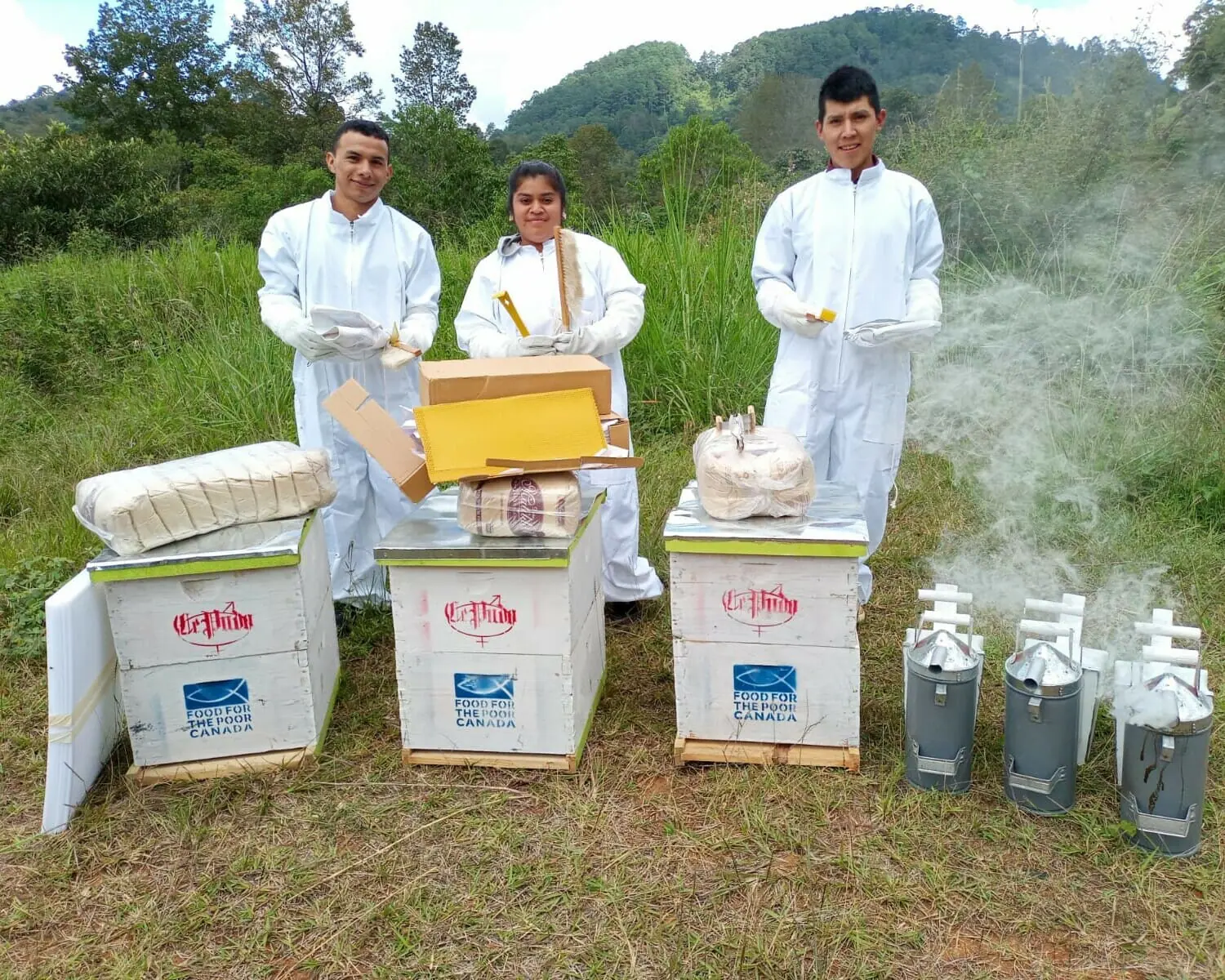One of our first stops was to the APICOL (La Asociación de Apicultores de Colinas) beekeeping project, where we learned about the care and maintenance of honey bees. The young bees are placed in a Langstroth hive where they grow and produce honey for the winter. By planting flowering plants and fruit trees nearby, the bees use the pollen from those plants as a food source. The honey then takes on the characteristics of that certain flower. For example, the honey we saw was very dark and rich in colour, and the taste had a hint of coffee. This is because the bees would take pollen from the nearby coffee plant flowers back to their beehive, influencing the colour and taste of the honey produced. Honey is currently a very in-demand product in Honduras, so beekeepers can find themselves nearly doubling their average annual income, giving them an opportunity for a sustainable livelihood.


It was here where we met one beekeeping beneficiary who has been part of the APICOL project, funded by FFTP Inc., for the past 2 years. “My name is Judy, and I have been a beekeeping beneficiary for 2 years. I started with only one hive, and then really started liking it. I then got the opportunity to get five additional beehives donated by CEPUDO. I am currently reproducing 68 beehives and sell the honey locally in Santa Barbara. I also sell soap, shampoo, creams, and sweets made from beeswax. This has given my family a lot of opportunity, and because of that, we have been able to make a living and send our kids to school.”

